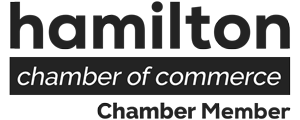





At face value, it’s simply well-crafted copy ✏️
But tear away some layers and branding is much more…
Never let anyone mislead you into thinking branding and conversion is only about nice-sounding words.
When it comes to your branding, you can’t present yourself like Gumby if you want to be successful.
Absolutely, Gumby was entertaining. He was cute, malleable, and approachable – but he had one colossal issue.
He could transform into just about anything. Poor, little Gumby could be anything for anyone. And he frequently was.
That’s why he was indistinct and vague.
No one could really understand who Gumby was like below the surface—on the inside 🔍
Sometimes he’d be cheerful. Other times he’d be gloomy. One time he was a policeman. Another time he was a dog. A doctor. A…
And it’s precisely what you need to avoid when it comes to your branding.
A product that can do everything might sound appealing and your product may have a bunch of remarkable features.
But you also run the risk of saturating your offering—customers don’t have one distinct reason to choose *you*
Why choose you over the competition?
Why is your offering the solution to their problems?
Take a clear-cut stance.
You don’t need to be a Jack of all trades, like Gumby.
How someone speaks and acts can help you know what to expect from them, right?
It’s the same for a brand. Take a moment and think this through with us.
When we develop a relationship with someone over time, we inevitably begin to judge their character.
Is this individual reliable, or do they fail do what they say they’ll do?
If it’s the latter, you will probably decide not to deepen the relationship once you recognize a person is full of poop 💩
That doesn’t usually happen in a split second. It’s usually a progression.
Now, imagine that your brand is a person.
Customers are introduced to you (via word of mouth, SEO, paid ads, a newsletter, etc.)
Then, over multiple touchpoints, they decide if your worth investing in.
This is why your corporate brand persona is so critical.
Every part of your brand messaging should further demonstrate that your company really does what it says it does.
Yes, do all the right marketing things and rank at the top of Google but it’s just as vital that each step in your sales funnel will forward the relationship.
Bottom line. When someone is exposed to your brand does it make them want more?
We just sent filled-out a competitor’s logo brief as an experiment.
And our minds are officially in “Kermit” mode (seriously there’s a funny Kermit GIF for almost everything).
But what the heck are we getting at here? The logo brief was terrifying!
After all, as a marketing agency, we get it.
Your persona abso-definitely-lutely influences the type of audience (and customers) you appeal to.
Is your brand conservative or playful? Traditional or colourful? Bold or graceful?
But… let’s be frank with one another here.
Words are forever shifting.
A small twist here, a tiny adjustment there, and you can alter your voice, tone or even brand positioning in a heartbeat.
It’s the process of defining “what we are” and “what we aren’t” that has us so anxious.
Because it’s pressing us to seriously consider setting those sharp boundaries when we genuinely believe that we shouldn’t.
Do companies really believe that consumers only think about:
Let’s be honest, people are really thinking:
🦷 I have a dentist appointment today at 11AM. I should probably leave a tad early to beat the traffic
🥳 Oh no, it’s dad’s birthday tomorrow! (“Hey, Google, find a Canadian Tire near me”)
🍸 2:30 already? Perfect. It’s time for an afternoon cocktail!
💌 I hope my boss likes this email
🍔 Are hamburger’s healthy? There are tomatoes, and uh, lettuce on them.
Customers are thinking about your product + your competitor’s product + everything else in the world. Don’t be one dimensional, but also don’t be Gumby… again (see the second FAQ above).
Our boss is notoriously keen and excitable about our company. It’s his whole world.
Which is why it’s not always easy to take a step back and re-evaluate our marketing and sales messaging.
Let’s go! Aggressive cold outreach, automated email responses, intrusive retargeting—all with a sense of act-now urgency in our brand voice.
We try to seize a customer’s attention with the hope that they are focused on our offering, if *only* for a brief moment. Carpe diem.
But we can’t overlook that we’re infiltrating a tiny speck of our customers complicated and demanding lives.
Consider this when talking to a cold lead and you’ll be viewed as 100x more sincere and supportive. Humanizing your brand is the only way to break through the “noise” without being forceful or sounding like a robot 🤖
